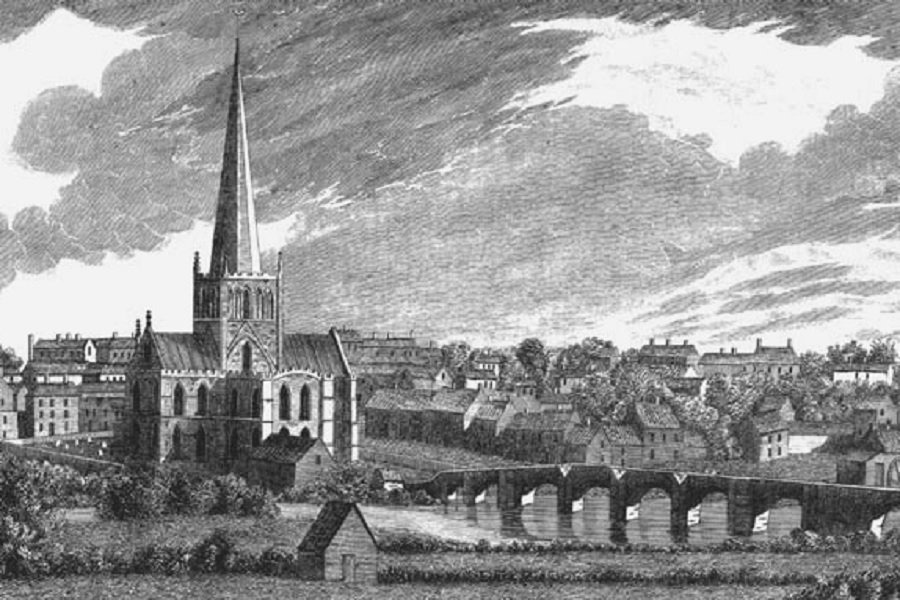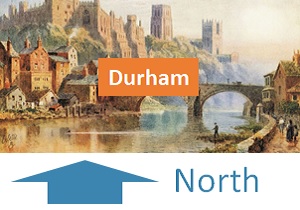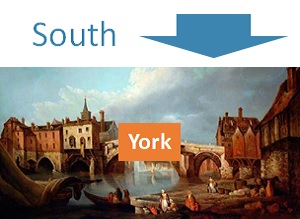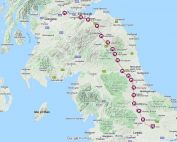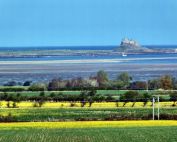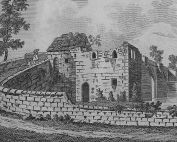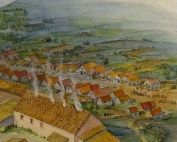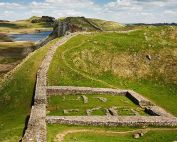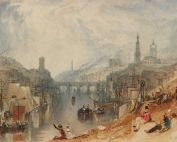Darlington and the Great North Road
The demise of The Great North Road’s coaching trade was the direct result of the transport revolution brought about by the steam train. The first public railway was opened in September 1825 between Darlington and Stockton.
The original station at Darlington was right alongside the Great North Road, which then took a more westerly course than today. In 1856, the road was straightened, leaving the station some distance away. The North Road station lives on as the “Head of Steam” museum.
About Darlington
Anglo-Saxon Dearthington grew to become a small market town, immediately north of the Great North Road’s crossing of the Tees. It has always been somewhat in the shadow of its larger neighbour, Durham. It was derided in the 17th century as “Darnton i’ the Dirt”. This unfortunate name was probably due to the unpaved streets of the town which are said to have inspired King James of Scotland to write the following verse during a visit of 1603:
“Darnton has a bonny, bonny church
With a broach upon the steeple
But Darnton is a mucky, mucky town
And mair sham on the people.”
Darlington became famous for the manufacture of linen – particularly towels and tablecloths. Daniel Defoe noted that the town was eminent for “good bleaching of linen, so that I have known cloth brought from Scotland to be bleached here”. However he also disparaged the town, writing that it had “nothing remarkable but dirt”.
A strong Quaker community developed and during the 18th and 19th centuries Quaker families were prominent amongst local business leaders and philanthropists. Best known was Edward Pease. He rejected an early nineteenth century plan to build a canal for the shipment of coal from south Durham to the mouth of the Tees and made the innovative suggestion that steam locomotives be used instead. The suggestion was accepted – the rest is history.
Darlington’s most famous landmark, the clock tower, was a gift to the town by the industrialist Joseph Pease in 1864.
Darlington became a centre for engineering and bridge building. Bridges from Darlington include:
– Middlesbrough Transporter Bridge
– Bosporus Bridge, Turkey
– Nile Bridge, Egypt
– Victoria Falls Bridge, Zimbabwe
– The Humber Bridge
Leading engineering companies included engine builder, Cummins.
Explore Darlington
The images below provide links to additional information either on this website or elsewhere.
Darlington Then and Now
The turnpike south of Darlington crossed the Tees between Croft and Hurworth Place. An early 14th century wooden bridge was badly damaged by a flood in 1356. It was rebuilt in stone and further restored in about 1400. The earlier image here is dated 1867.

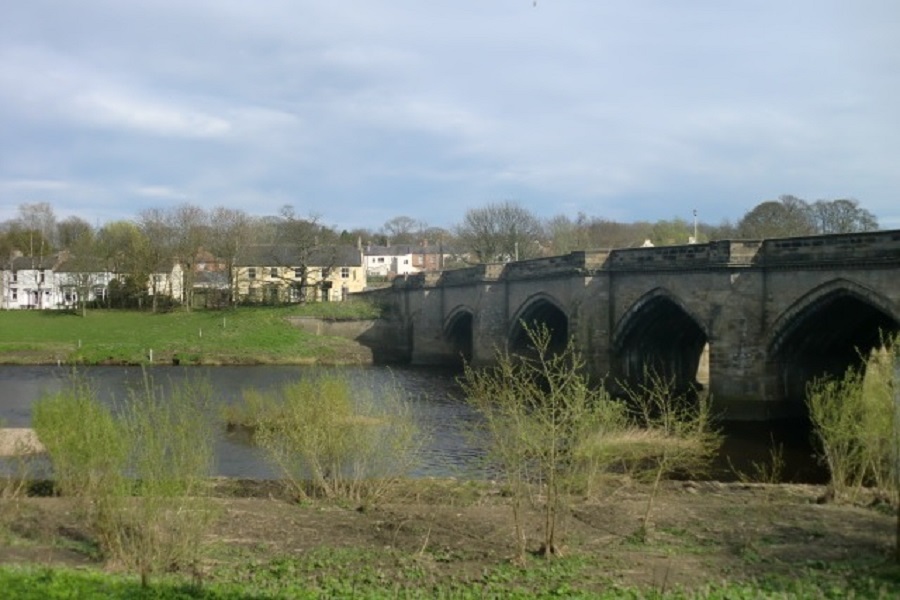
Stanwick Iron Age Settlement
Stanwick was an important Iron Age settlement prior to the arrival of the Romans. It was the tribal centre of the Brigantes who were (or became) responsible for controlling much...
Dere Street
Dere Street is the name generally used to describe the Roman road leading from York to the Firth of Forth. It was constructed by the military to secure the colonisation...
Lindisfarne
The Holy Island of Lindisfarne lies 4 miles from the Great North Road between Berwick and Newcastle. The Northumberland coast is magnificent, and Lindisfarne is...
Angel of the North
The Angel of the North rose alongside the Great North Road in February 1998. The 20m high steel statue was deliberately sized and sited to be visible to those travelling...
River Swale
The Swale is crossed by the Great North Road at Catterick Bridge. The old bridge dates from the 1420s and was the primary crossing until the A1 was upgraded in...
Roman Catterick – Cataractonium
Roman Catterick, or Cataractonium, was a fort and settlement which was established just south of the crossing point of the River Swale. Until other military centres were...
River Wear
The River Wear used to be crossed three times by the Great North Road; twice where the river forms a meander around Durham and once a few miles.....
Hadrian’s Wall
Hadrian’s Wall embodies one of the key reasons for the existence of the Roman Roads north through Britain which were the precursors to our Great North.....
River Tyne
The Romans built the first bridge over the Tyne in around AD 120 - at about the same time as Hadrian's Wall. It is sometimes referred to as Pons Aelius, after the.....
River Tees
The meandering River Tees is crossed by the Great North Road close to Darlington. Today the A1 intersects the Tees to the west of the town. In the past it was.....

